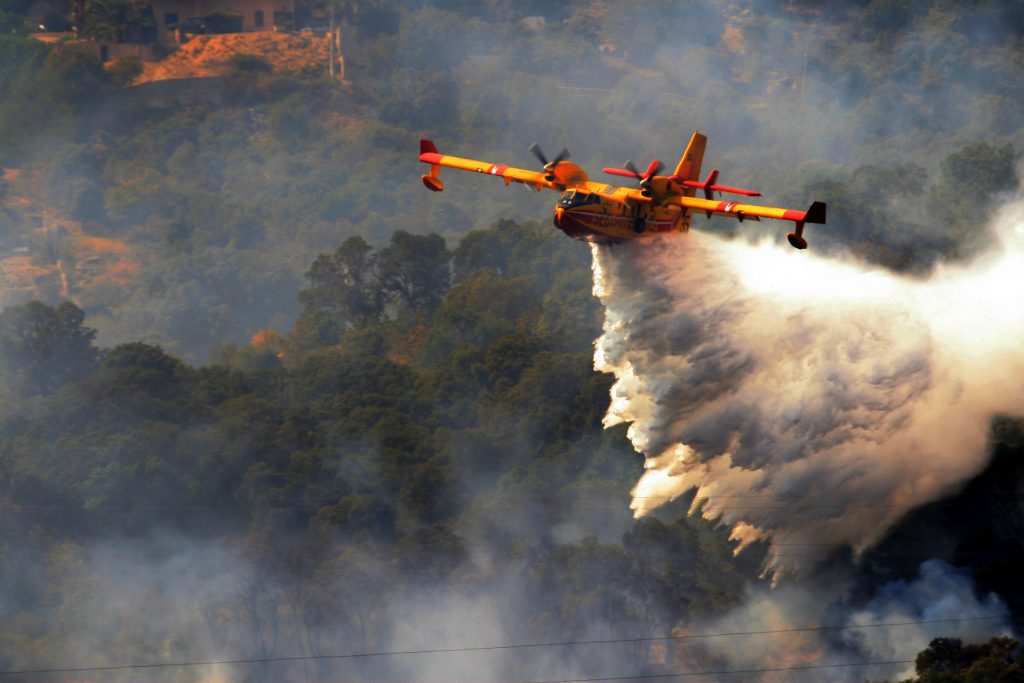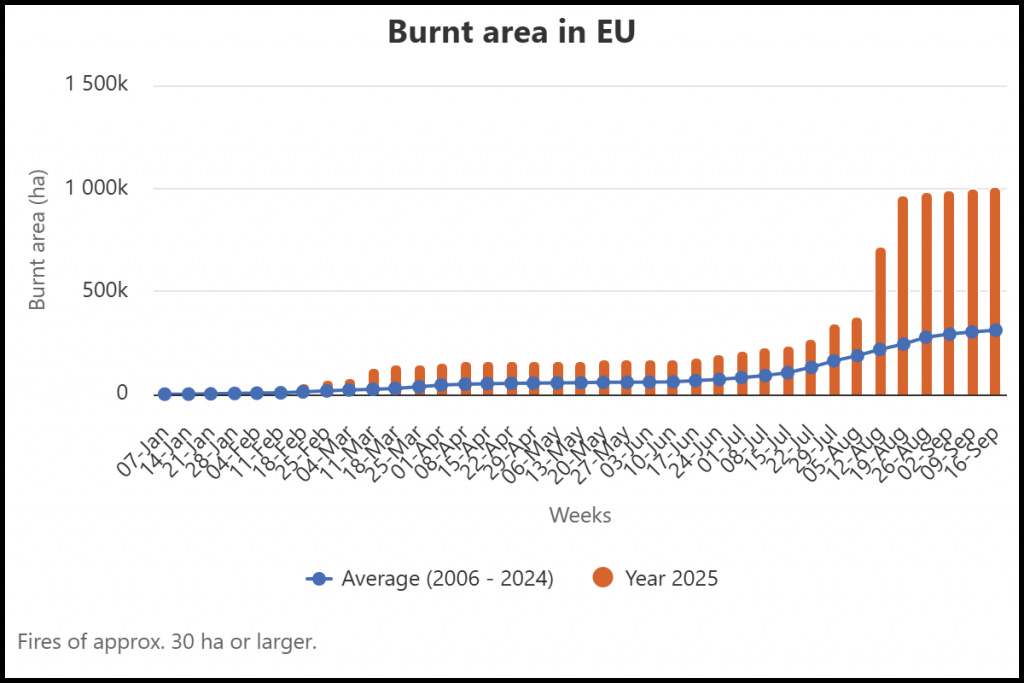By HARTMUT BÜHL / NANNETTE CAZAUBON, European News Journal, Paris

Europe’s summer seasons are increasingly marked by large-scale wildfires that claim lives and burn vast areas, requiring long recovery periods, a trend that is expected to continue due to climate change. In addition, fire risks have spread to previously unaffected areas, far beyond the Mediterranean basin, to now affect more frequently countries such as Germany, Sweden, and eastern European states.
Despite tremendous efforts by the nations themselves and assistance from the European Union, this year again deaths have been reported, countless homes destroyed, businesses and livelihoods devastated. What’s more, an estimated 95% of the fires are man-made, caused intentionally or through carelessness. This illustrates the need to catch up on awareness-raising in this area.
2025 – a worrying record
In 2025, there have been more wildfires in Europe than ever before. In mid-September, the European Forest Fire Information System (EFFIS), which is part of the European Union’s Copernicus Earth Observation Programme, estimated that more than 1 million hectares (ha) of land have burnt in the EU since the beginning of the year, an area larger than the island of Cyprus. This is over 3.5 times more than in 2024, and it is the highest value ever recorded within the EU since 2006.

Most affected countries
EFFIS has recorded over 2,000 large fires (counting only those over 30 ha) since the beginning of the year. Spain is the worst affected country, with more than 400,000 hectares burned, representing almost 40% of the EU total, followed by Portugal (over 260,000 ha) and Romania (261,000 ha). Tens of thousands of hectares have also been burnt in other countries, such as Italy, Greece, France, or Bulgaria. In 2025, these fires resulted in 40.25m tonnes of CO2 emissions (compared to 13.21m for the same period in 2024).
Support and solidarity in 2025
In this worrying picture, there are also positive aspects to highlight: the EU Civil Protection Mechanism (UCPM) has operated quickly and effectively, thus giving full meaning to the concept of European solidarity. Information systems are increasingly interconnected, and the use of data from space based on earth observation satellites is proving effective.
The aim of the UCPM is to pool response capacities from all 27 EU countries and 10 participating countries (Albania, Bosnia and Herzegovina, Iceland, Moldova, Montenegro, North Macedonia, Norway, Serbia, Türkiye, and Ukraine). Any country in the world faced with an emergency can request assistance via the UCPM. Its activation then triggers the Emergency Response Coordination Centre (ERCC) with its highly professional staff in Brussels. The ERCC monitors events around the globe 24/7 and ensures the rapid deployment of emergency support via a reserve of emergency response teams and equipment, called the European Civil Protection Pool (ECPP), and/or the rescEU reserve capacity.
UCPM activation in 2025
In 2025, by the beginning of September, the UCPM had been activated 18 times to respond to wildfires. The UCPM coordinated assistance for 11 countries. 38 aeroplanes and 20 helicopters have been mobilised and more than 760 personnel have been deployed, including pilots, mechanics, logistics, or firefighters. The Copernicus Emergency Management Service produced multiple satellite maps on demand to assist national authorities in responding to wildfires.
In preparation for the 2025 wildfire season, the EU had put together several additional resources, including 22 firefighting aeroplanes and 4 helicopters hosted by 10 EU Member States. The principle of prepositioning firefighting teams has also shown success: between July and September, nearly 650 firefighters from 14 European countries have been strategically prepositioned in high-risk areas of France, Greece, Portugal, and Spain. Finally, a dedicated wildfire support and analysis cell was established at the ERCC between June and September to ensure rapid and efficient coordination and response.
Preparing for the long term
For the upcoming years, the European Commission has allocated significant financial resources to a permanent rescEU fleet, comprising 12 new firefighting planes permanently based in Croatia, France, Grece, Italy, Portugal, and Spain and 5 new helicopters based in the Czech Republic, Romania, and Slovakia (and in 2 other pending locations). These aircraft are expected to be delivered in 2026, with the first planes available during the 2028 wildfire season.
 Editorial Director Hartmut Bühl and Senior Editor Nannette Cazaubon visiting a fire brigade in Southern France.
Editorial Director Hartmut Bühl and Senior Editor Nannette Cazaubon visiting a fire brigade in Southern France.
© ENJ, 2025

